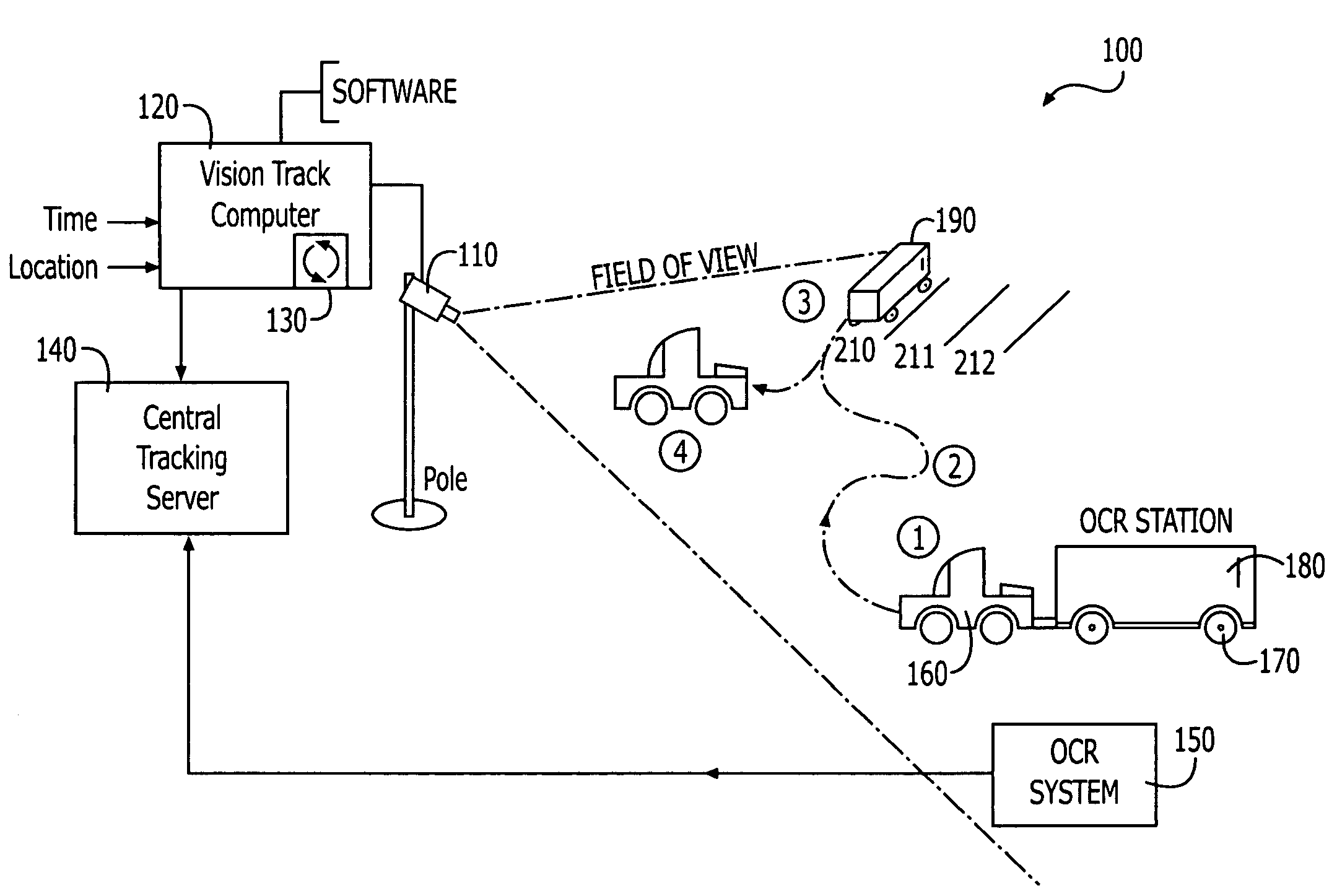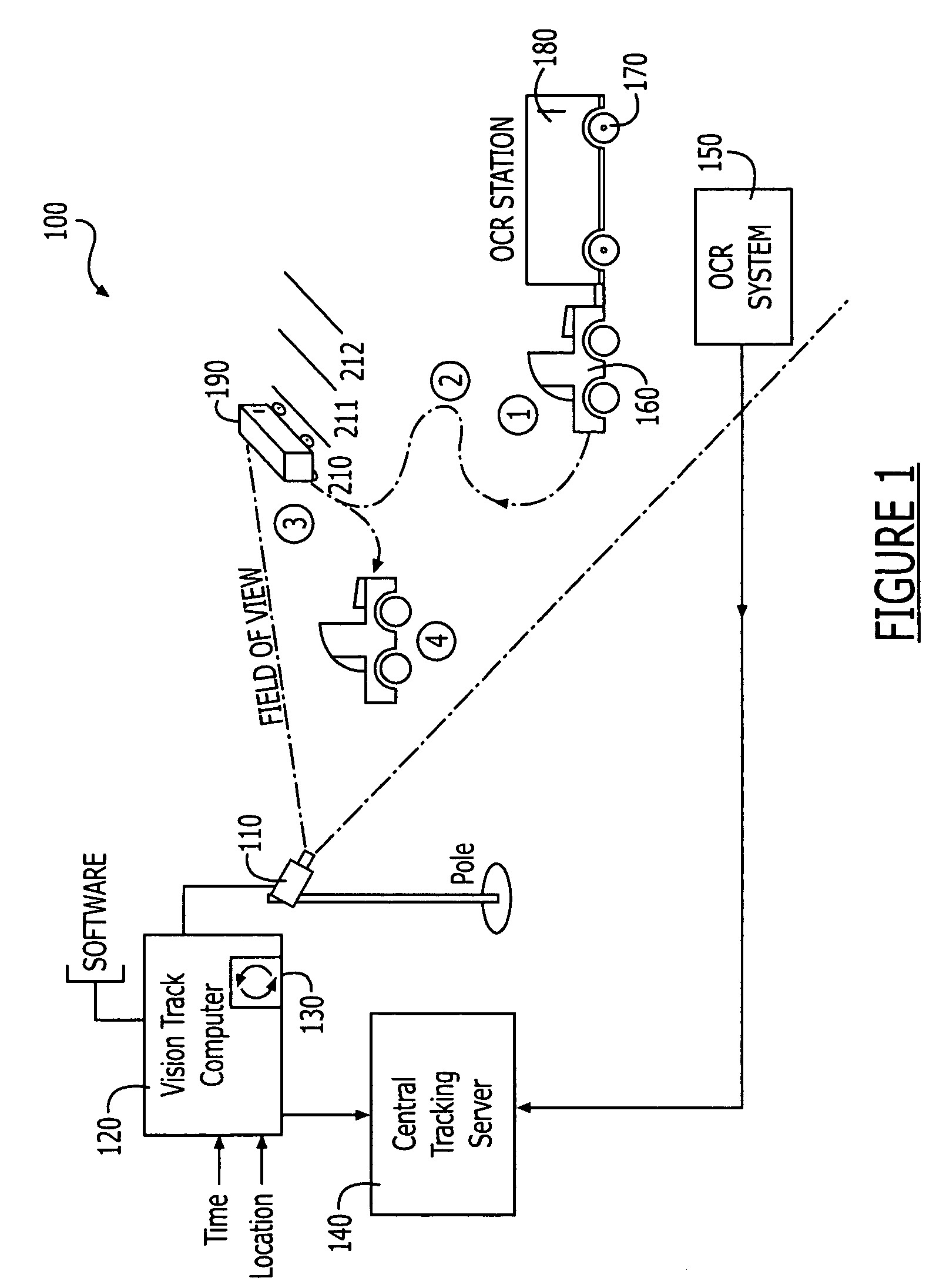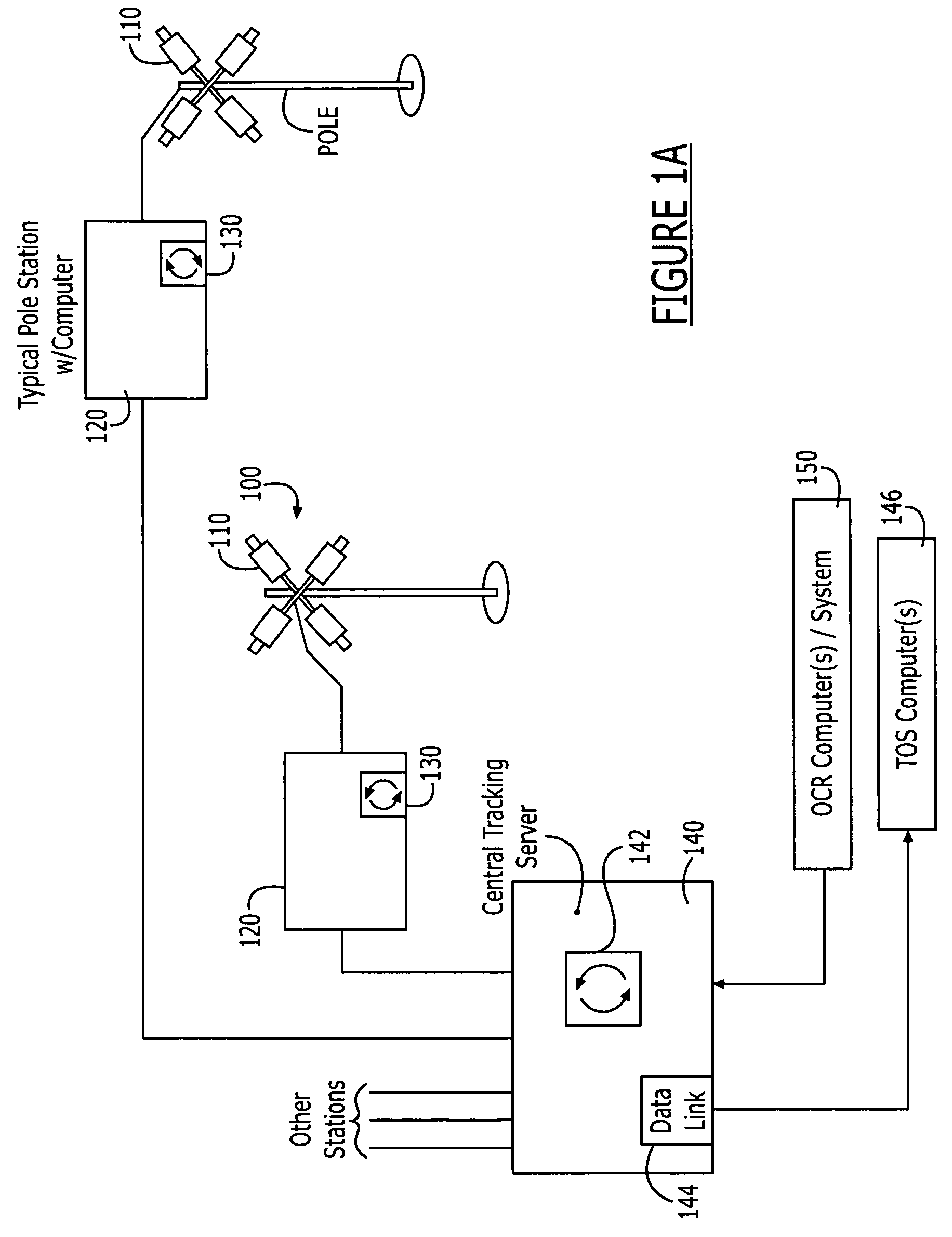Systems and methods for monitoring and tracking movement and location of shipping containers and vehicles using a vision based system
a technology of vision based system and tracking system, applied in the field of tracking the location of shipping objects, can solve the problems of manual system that employs manual identification and recordation of shipping container location, manual system that does not provide real-time reporting of container location, and manual system that does not provide automatic reporting, so as to achieve the effect of low cost and minimal error ra
- Summary
- Abstract
- Description
- Claims
- Application Information
AI Technical Summary
Benefits of technology
Problems solved by technology
Method used
Image
Examples
Embodiment Construction
[0052]The present inventions now will be described more fully hereinafter with reference to the accompanying drawings, in which some, but not all embodiments of the invention are shown. Indeed, these inventions may be embodied in many different forms and should not be construed as limited to the embodiments set forth herein; rather, these embodiments are provided so that this disclosure will satisfy applicable legal requirements. Like numbers refer to like elements throughout.
[0053]FIG. 1 illustrates a schematic diagram of a system for vision-based, location-tracking of movable objects, such as vehicles, containers and / or chassis in a transit terminal environment, in accordance with an embodiment of the present invention. The transit terminal may be an automotive terminal, a marine vessel terminal, a rail terminal, an intermodal terminal or any other transit terminal. The vision-based, location-tracking system 100 includes one or more, imaging devices 110 typically positioned at pre...
PUM
 Login to View More
Login to View More Abstract
Description
Claims
Application Information
 Login to View More
Login to View More - R&D
- Intellectual Property
- Life Sciences
- Materials
- Tech Scout
- Unparalleled Data Quality
- Higher Quality Content
- 60% Fewer Hallucinations
Browse by: Latest US Patents, China's latest patents, Technical Efficacy Thesaurus, Application Domain, Technology Topic, Popular Technical Reports.
© 2025 PatSnap. All rights reserved.Legal|Privacy policy|Modern Slavery Act Transparency Statement|Sitemap|About US| Contact US: help@patsnap.com



